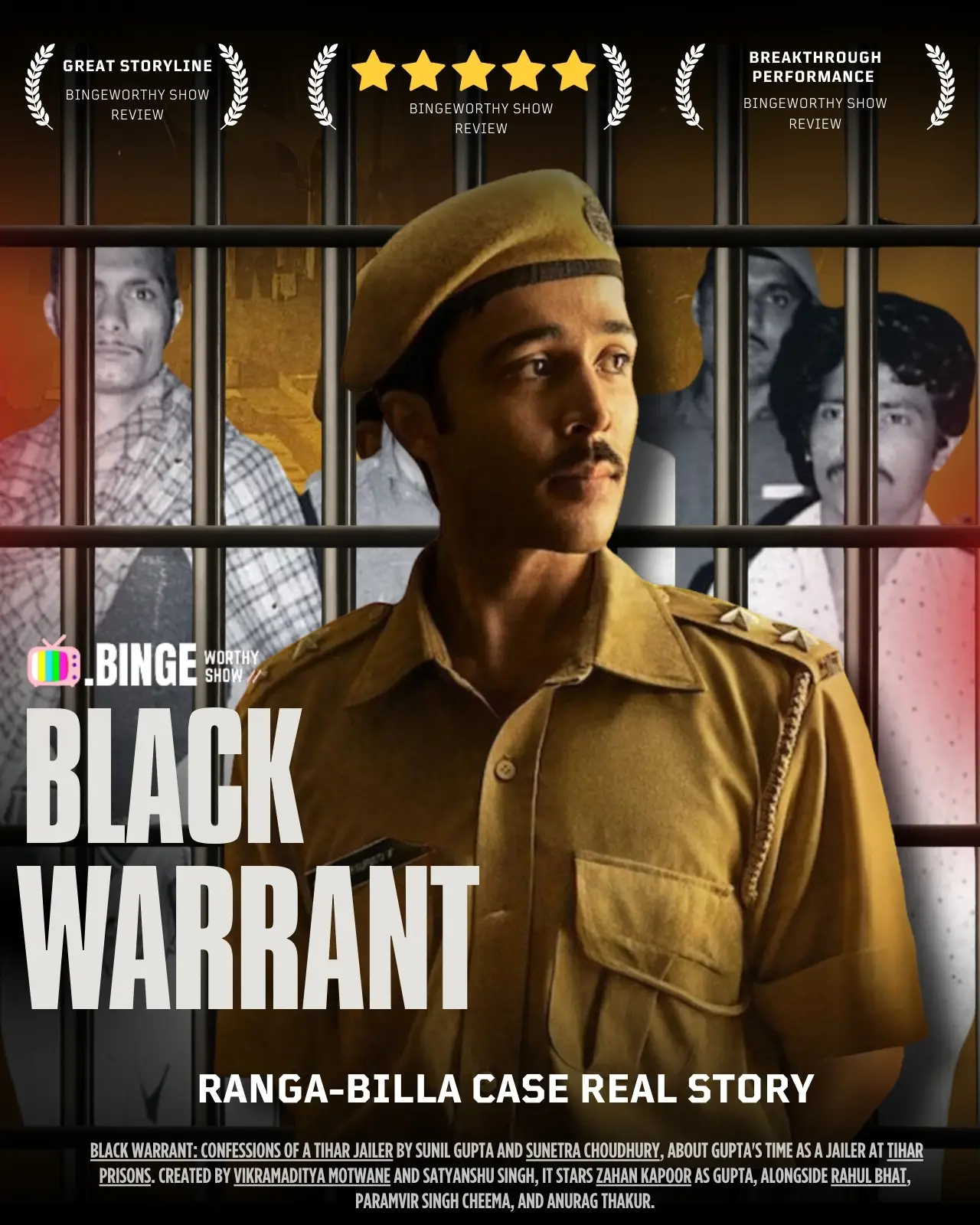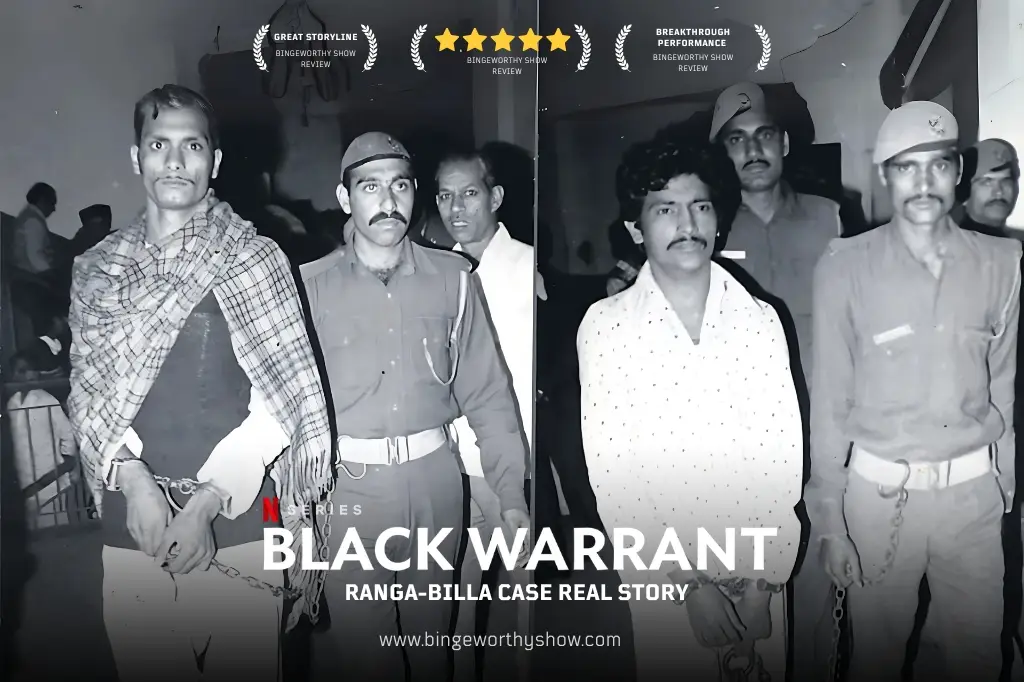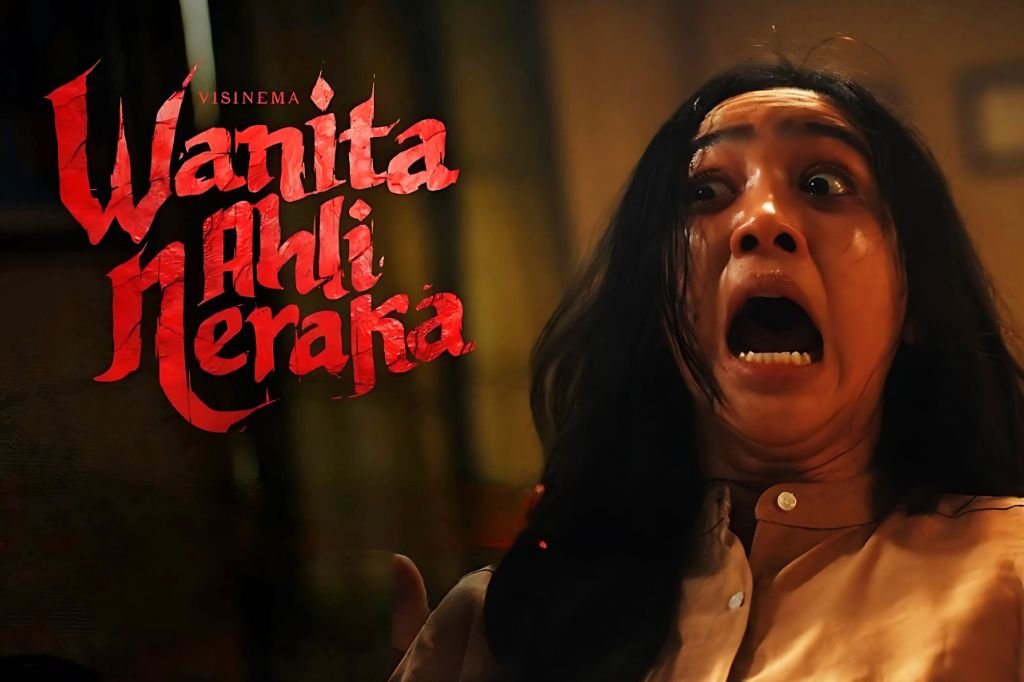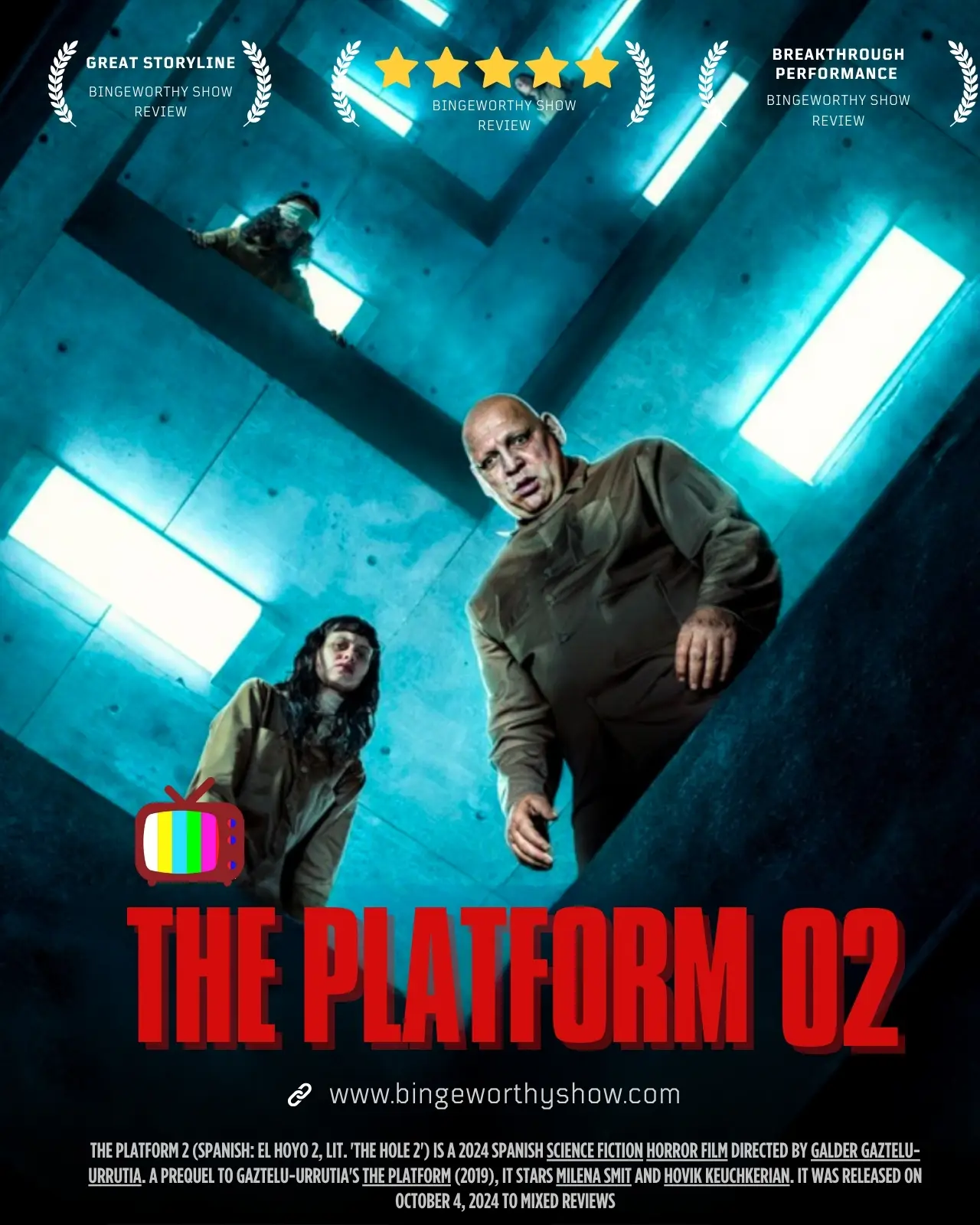Now Reading: Black Warrant and the Ranga-Billa case: Real Story
-
01
Black Warrant and the Ranga-Billa case: Real Story
Black Warrant and the Ranga-Billa case: Real Story

Delhi—a city older than time itself. A city of countless stories woven into its alleys and bylanes. Stories of gods and emperors, of saints and sages. But hidden among them are stories of monsters. Stories not preserved in memories, but in wounds. One such terrifying tale still sends chills down the spine—the story of the Ranga-Billa Case.
A crime so horrific, it shook the very foundations of the country. It toppled governments, rattled Parliament, and united an entire nation with one deafening demand—justice. The Ranga-Billa Case is not just a chapter in history but a lesson that still echoes in the streets of Delhi.
Table of Contents
August 26, 1978: The Night That Changed Everything
It was a Saturday evening in Delhi. At their home in Dhaula Kuan’s Officer’s Enclave, Captain Madan Mohan Chopra and his wife were excited. Their children, 16-year-old Geeta and 14-year-old Sanjay, were scheduled to participate in a program on All India Radio at 8 PM. The family eagerly gathered around the radio, but as the program began, there was no sign of Geeta’s voice.
Thinking they might have tuned into the wrong channel, they changed frequencies. Still, nothing. Concerned but not alarmed, Captain Chopra left home at 8:40 PM to pick up his children from AIR’s gate at 9 PM, as planned. But when he arrived, they were nowhere to be found.
Worried, he asked around. The staff at AIR informed him that Geeta and Sanjay had never arrived for the program. His heart sank. He rushed back home and called friends and relatives—had anyone seen them? The answer was the same everywhere: No.
With growing dread, he and his wife reported the children missing to the police by 10:30 PM. What should have been a normal evening had turned into every parent’s worst nightmare. This was the beginning of the infamous Ranga-Billa Case.
A Twisted Coincidence and a Key Witness
While Captain Chopra searched frantically for his children, an unrelated but crucial event was unfolding at Wellington Hospital. At around 10:15 PM, a man named Vinod arrived at the hospital with a deep head injury, accompanied by another man, Harbhajan Singh. Vinod claimed that a gang had attempted to rob him, stealing his watch and attacking him when he resisted.
The hospital staff attended to his wounds, but something about the incident seemed off. When police officers accompanied Vinod and Harbhajan to the alleged crime scene, there was no sign of a struggle—no blood, no broken buttons, nothing. The officers were suspicious, but Vinod and Harbhajan were allowed to leave.
It wasn’t until later that the police realized the possible connection: Vinod and Harbhajan were fake names, and these men were none other than Ranga and Billa.
Discovery of the Bodies

On the night of August 27, around 3:15 AM, Captain Chopra received a call from the police. He was asked to come to Delhi Ridge—an isolated forested area. His worst fears were realized when he arrived.
The lifeless bodies of Geeta and Sanjay were discovered, abandoned in the jungle. Geeta’s body was found partially unclothed, suggesting a sexual assault, while both siblings bore multiple stab wounds. Their corpses had already begun to decompose. The horrific details of the Ranga-Billa Case sent shockwaves across the nation.
Delhi was horrified. The newspapers splashed the gruesome details across their front pages. Amid the growing outrage, a doctor contacted the police, claiming he had given a lift to two children matching Geeta and Sanjay’s description near Dhaula Kuan. Another witness, Bhagwan Das, recalled seeing a yellow Fiat with two men and two struggling children inside. The girl was pulling the driver’s hair while the boy fought the passenger. He noted the car’s registration number: HRK 8930.
The Chase and the Capture
A nationwide hunt for the culprits was launched. On August 31, a suspicious abandoned Fiat car was found in Delhi’s Majlis Park. Investigation revealed multiple tampered license plates, including HRK 8930, linking it directly to the Ranga-Billa Case. Further evidence, such as bloodstains and cigarette butts, pointed to a gruesome crime.
Despite the overwhelming evidence, Ranga and Billa had vanished. But on September 8, nearly 200 kilometers away, fate intervened. Two suspicious men boarded a military compartment on the Kalka Mail. When questioned, they claimed to be army personnel but failed to produce IDs. Sensing something was amiss, the army personnel overpowered them and restrained them.
One of the soldiers picked up a newspaper—and his blood ran cold. The faces of the men matched the sketches of Ranga and Billa, the most wanted criminals in India at that moment. They had been caught.
The Trial and Execution
Interrogation led to chilling confessions. Ranga and Billa admitted to kidnapping Geeta and Sanjay for ransom but later decided against it. They drove the children to a secluded area, where they brutally assaulted and killed Sanjay first. Geeta, despite her desperate resistance, suffered the same fate after enduring unspeakable horrors.
During the trial, they initially confessed before a magistrate, but later retracted their statements, claiming police torture. However, forensic evidence, eyewitness testimonies, and their earlier confessions painted a damning picture.
The trial was swift. The nation demanded justice. Both Ranga and Billa were sentenced to death.
On April 21, 1981, the final judgment was delivered. Ranga and Billa were executed on January 31, 1982, by hanging.
Legacy of the Ranga-Billa Case
In recognition of their unimaginable courage, Geeta and Sanjay were posthumously awarded the Kirti Chakra. Their sacrifice inspired the creation of two national bravery awards: The Sanjay Chopra Award and The Geeta Chopra Award, given annually to children who demonstrate extraordinary courage.
Reflections on the Ranga-Billa Case
This case wasn’t just about two monsters. It was about a society that hesitated. Witnesses saw the children struggling but didn’t react fast enough. The police wasted time on jurisdictional debates. Could their lives have been saved if action was taken earlier?
Even today, crimes like these continue. But what’s changed? Have we become a society of mere spectators? When injustice unfolds before us, do we act like Bhagwan Das and Inderjeet, who tried to intervene? Or do we stand back, record videos, and walk away?
Justice was served to Ranga and Billa. But perhaps, on that fateful night, something much larger died too—our collective conscience.
The question remains: Did we really learn anything from the Ranga-Billa Case?
Disclaimer: We have tried our best to gather accurate and well-researched information. However, as humans, there may still be inadvertent errors. If you notice any discrepancies, please comment with a reliable source, and we will rectify them.



























